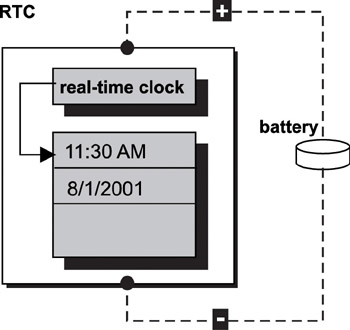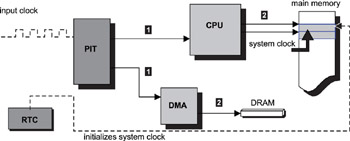11.2 Real-Time Clocks and System Clocks
In some references, the term real-time clock is interchangeable with the term system clock. Within the context of this book, however, these terminologies are separate, as they are different on various architectures.
Real-time clocks exist in many embedded systems and track time, date, month, and year. Commonly, they are integrated with battery-powered DRAM as shown in Figure 11.1. This integrated real-time clock becomes independent of the CPU and the programmable interval timer, making the maintenance of real time between system power cycles possible.

Figure 11.1: A real-time clock.
The job of the system clock is identical to that of the real-time clock: to track either real-time or elapsed time following system power up (depending on implementation). The initial value of the system clock is typically retrieved from the real-time clock at power up or is set by the user. The programmable interval timer drives the system clock, i.e. the system clock increments in value per timer interrupt. Therefore, an important function performed at the timer interrupt is maintaining the system clock, as shown in Figure 11.2.

Figure 11.2: System clock initialization.
